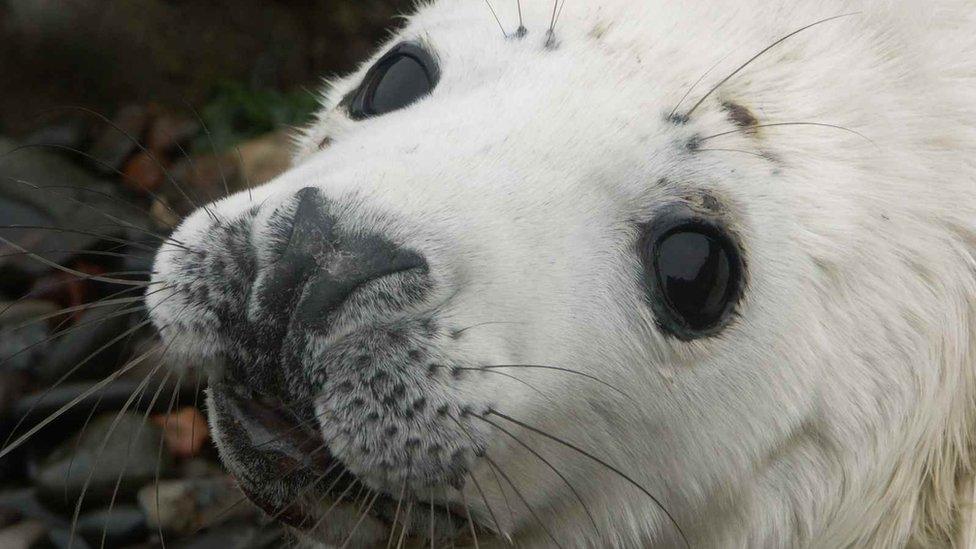Advice issued as drone spooks resting seals
- Published
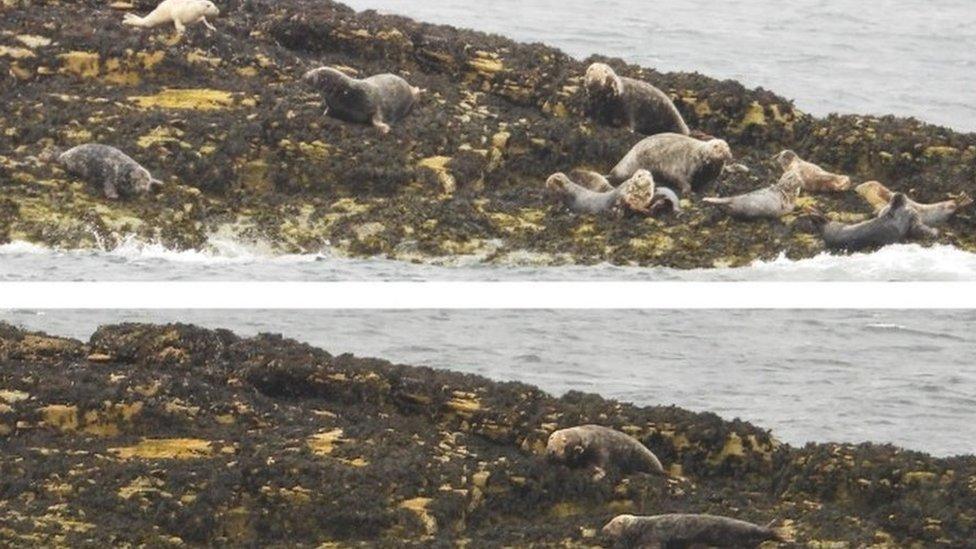
Sue Sayer said the seals did not return to the ledges, so their behaviour for the day had been changed and their rest "seriously curtailed"
The Cornwall Seal Group Research Trust is asking drone operators to keep their distance from wildlife.
Sue Sayer, founder of the charity, saw 11 sleeping seals dart into the water after they were spooked by a drone flying overhead.
Such jarring movements can lead to serious injuries for seals, and it can even be fatal, Ms Sayer said.
She said drone users should always keep 100m distance from wildlife.
Ms Sayer was surveying seals from a distance on a cliff edge in Cornwall on Sunday, when she saw a drone fly overhead.
She said the noise gave the sleeping seals a "massive shock" and they darted into the sea.
"Shock creates a stress hormone release, as it does for humans, where it raises your heart rate and it raises your breathing rate. For the seals their safest places in the sea, so they leg it into the sea.
"In doing so, what they'll do is they'll race over sharp rocks that risk injury to cutting their skin ripping their claws.
"Sometimes the tide's gone out a long way and the seals tombstone into the water and that risks life threatening injuries from broken ribs, or if it's a pregnant female then she's bouncing on her unborn pup," she said.

Sue Sayer said the drone spooked the seals and they immediately leapt into the water
Ms Sayer said when seals are resting on rocks they are digesting their food, and replenishing their oxygen supplies for the next feeding trip, so they are in a vulnerable position.
"It can actually make the difference between life and death by tipping them into an energy spiral deficit," Ms Sayer added.
She said the advice from the charity is not about "pointing the finger" at drone users, it is about educating people on how to avoid disrupting wildlife.
"The seals was probably one of the main objectives of the drone operator, but I'm absolutely sure that they had no idea that they would have an impact on the seals.
"I really enjoy drones and value the footage that they can collect, but operators should avoid flying over congregations of wildlife, the safe distance is 100 metres from land, sea and air, so respect that," she said.

Follow BBC News South West on Twitter, external, Facebook, external and Instagram, external. Send your story ideas to spotlight@bbc.co.uk, external.
- Published24 December 2021
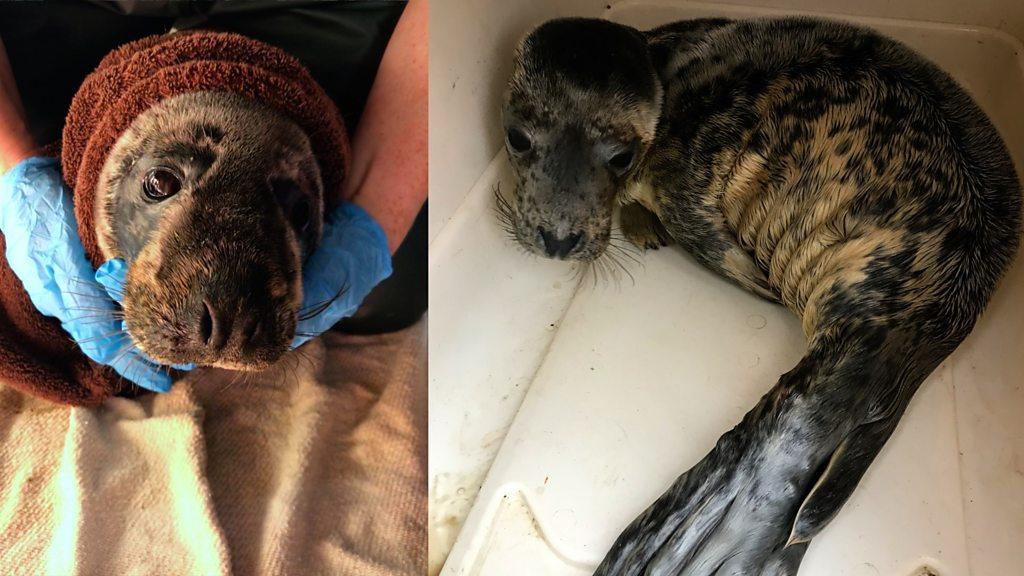
- Published21 December 2021
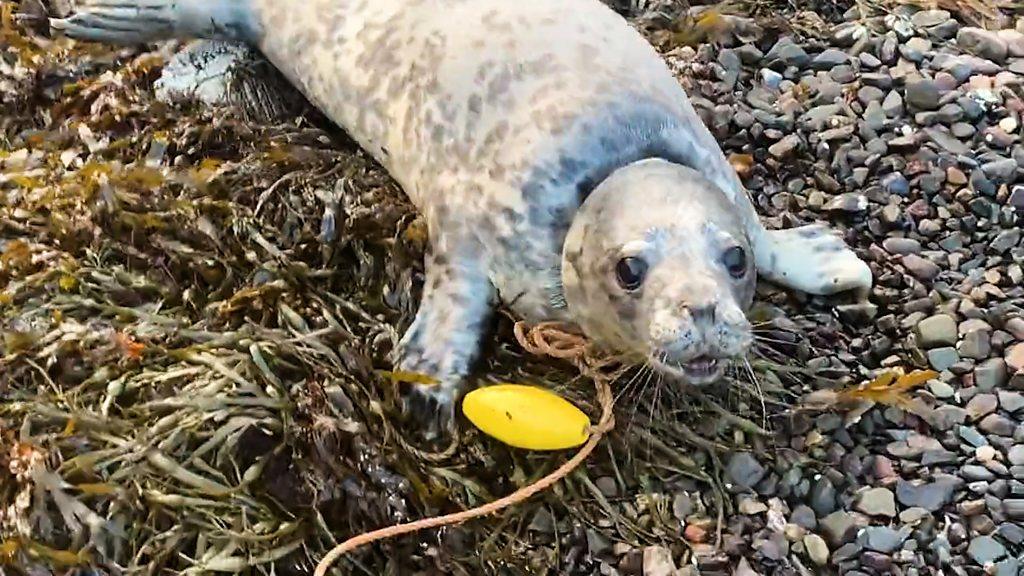
- Published21 December 2021
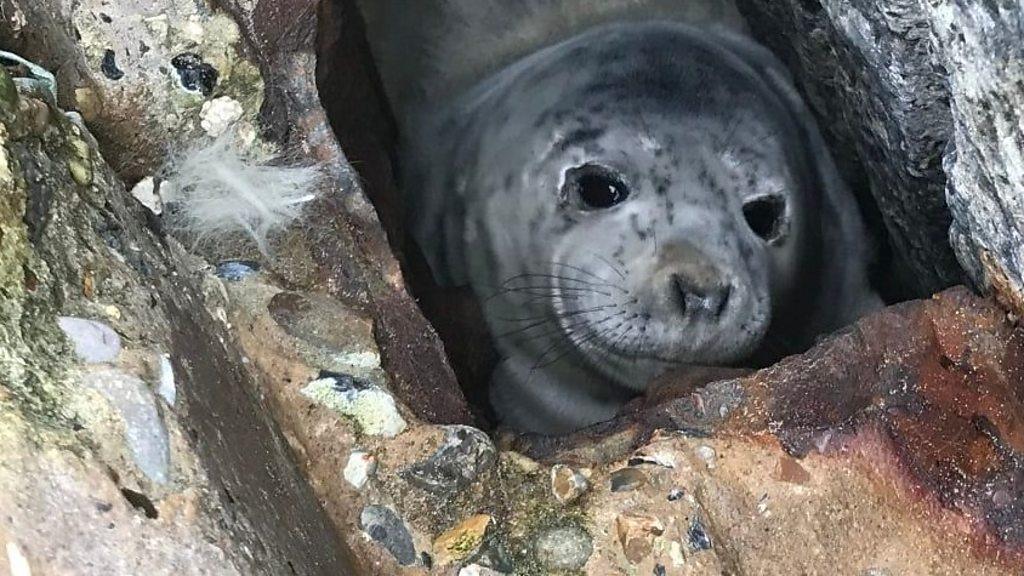
- Published22 September 2021
